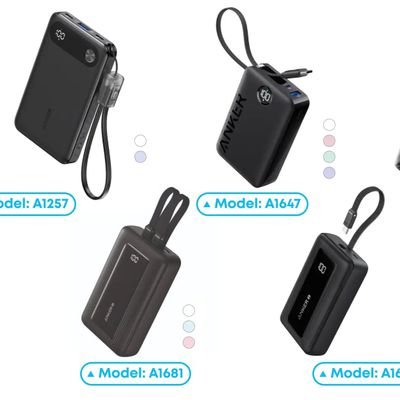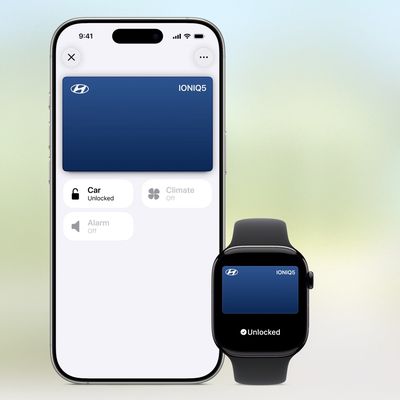Running the Retina MacBook Pro at Full 2880x1800 Resolution
While Apple's new Retina MacBook Pro includes a display measuring 2880x1800 pixels, the default display options do not allow users to run their systems at that raw resolution. Instead, the extra pixels are used to display a higher level of detail on a canvas representing the previous 1440x900 resolution. As a result, windows and user interface elements appear to be the same relative size as on a 1440x900 15" display, but with four times the detail. Users who wish to use a desktop with apparent resolution higher than 1440x900 can still do so, as System Preferences offers several different options ranging up to 1920x1200.
Those users who want even more screen real estate by tapping into the full 2880x1800 resolution mode of the display can also do so, but the option involves a workaround that is not authorized by Apple. Macworld has more details on the process, which involves using either a third-party app like the paid SwitchResX (as noted in our forums) or one of a number of free options that have sprung up such as Change Resolution.
 Retina MacBook Pro running at 2880x1800
Retina MacBook Pro running at 2880x1800
(Click for larger)Running a 2880x1800 desktop on a screen measuring only 15.4 inches diagonally obviously results in very small text and user interface elements, but for those willing to sit close enough to their screens to make the onscreen content readable, it may be an interesting option.
As noted by developer Steven Troughton-Smith, users running Windows on the new Retina MacBook Pro can also take advantage of the full display resolution, simply setting the resolution in preferences within Windows.
Popular Stories
Apple hasn't updated the AirPods Pro since 2022, and the earbuds are due for a refresh. We're counting on a new model this year, and we've seen several hints of new AirPods tucked away in Apple's code. Rumors suggest that Apple has some exciting new features planned that will make it worthwhile to upgrade to the latest model.
Subscribe to the MacRumors YouTube channel for more videos.
Heal...
Chase this week announced a series of new perks for its premium Sapphire Reserve credit card, and one of them is for a pair of Apple services.
Specifically, the credit card now offers complimentary annual subscriptions to Apple TV+ and Apple Music, a value of up to $250 per year.
If you are already paying for Apple TV+ and/or Apple Music directly through Apple, those subscriptions will...
Popular accessory maker Anker this month launched two separate recalls for its power banks, some of which may be a fire risk.
The first recall affects Anker PowerCore 10000 Power Banks sold between June 1, 2016 and December 31, 2022 in the United States. Anker says that these power banks have a "potential issue" with the battery inside, which can lead to overheating, melting of plastic...
In 2020, Apple added a digital car key feature to its Wallet app, allowing users to lock, unlock, and start a compatible vehicle with an iPhone or Apple Watch. The feature is currently offered by select automakers, including Audi, BMW, Hyundai, Kia, Genesis, Mercedes-Benz, Volvo, and a handful of others, and it is set to expand further.
During its WWDC 2025 keynote, Apple said that 13...
Apple's next-generation iPhone 17 Pro and iPhone 17 Pro Max are around three months away, and there are plenty of rumors about the devices.
Apple is expected to launch the iPhone 17, iPhone 17 Air, iPhone 17 Pro, and iPhone 17 Pro Max in September this year.
Below, we recap key changes rumored for the iPhone 17 Pro models:Aluminum frame: iPhone 17 Pro models are rumored to have an...
Apple last month announced the launch of CarPlay Ultra, the long-awaited next-generation version of its CarPlay software system for vehicles.
There was news this week about which automakers will and won't offer CarPlay Ultra, and we have provided an updated list below.
CarPlay Ultra is currently limited to newer Aston Martin vehicles in the U.S. and Canada. Fortunately, if you cannot...
Apple will finally deliver the Apple Watch Ultra 3 sometime this year, according to analyst Jeff Pu of GF Securities Hong Kong (via @jukanlosreve).
The analyst expects both the Apple Watch Series 11 and Apple Watch Ultra 3 to arrive this year (likely alongside the new iPhone 17 lineup, if previous launches are anything to go by), according to his latest product roadmap shared with...
Apple is planning to launch a low-cost MacBook powered by an iPhone chip, according to Apple analyst Ming-Chi Kuo.
In an article published on X, Kuo explained that the device will feature a 13-inch display and the A18 Pro chip, making it the first Mac powered by an iPhone chip. The A18 Pro chip debuted in the iPhone 16 Pro last year. To date, all Apple silicon Macs have contained M-series...






















